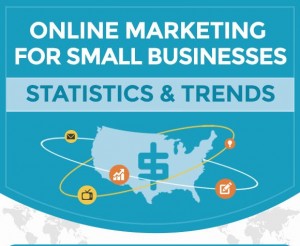If it feels like you have a dysfunctional relationship with data, you’re not alone. Columnist Joshua Reynolds discusses the data challenges marketers face and offers a step-by-step ‘relationship tune-up’ guide.

As the relationship between human marketers and marketing data evolves from casual dating into something a little more serious, many are beginning to feel the growing pains. Sometimes the data tells us thing we don’t want to hear, or worse yet, can’t understand. Sometimes we ask the data to answer questions it can’t. And sometimes we have to spend more energy than we have breaking through the static and cutting to what really matters.
In short, when it comes to data, many of us feel like we’re in a dysfunctional relationship, and it’s time for a little couples counseling.
Marketers are from Mars, data platforms are from Venus
First off, as is often the case with couples, we can’t assume that we really understand each other. All too often, we come to our data full of assumptions and beliefs that have gone unchallenged, and whether we realize it or not, we’re just looking for confirmation of what we already believe.
This phenomenon is known among cognitive scientists as confirmation bias, and it’s a really nasty bug in the human operating system. In short, it’s a subroutine in the algorithm of human perception that leads us to focus on data that confirms pre-existing beliefs. It’s almost as though the data that tells us we’re right is shouting at us, while the data that suggests we’re wrong is relegated to a quiet (but potentially game-changing) whisper.
The problem is, as is also often the case with couples, that while marketers are often mercurial and full of urgency and need, our counterpart data is annoyingly level-headed and complacent. It doesn’t put up an argument. Often it will happily comply and just tell us what we want to hear.
In other words, unless you design a solution to counteract this dynamic, the data will play along with our confirmation bias disorder and lead us down the wrong path. As Ronald Coase, famed British economist and winner of the Nobel Prize in Economics in 1991, once said, “If you torture the data long enough, it will confess to anything.”
Blah, blah, blah
Confirmation bias isn’t the only thing creating relationship problems. Data has its own baggage, too, and part of it is that it just won’t shut up. Sure, once in a while it tells us something useful that might drive sales. But it also gossips, spreads rumors and occasionally starts stupid fights that could have been avoided if we’d all just counted to 10 first.
Think about it. We’re surrounded by marketing data dashboards, and our brains just can’t handle the strain. Most companies have at least a dozen or more data dashboards going at any given time, leading to massive data fatigue and information overload.
And it’s more than just a data-induced headache we have to worry about. This dynamic of too much “what” and not enough “so what” leads to some very real and problematic behaviors.
First of all, marketers are left to sort through the data in the hopes of finding a meaningful insight, even though that’s what the dashboard was supposed to do in the first place. To use the old proverb, we’re in a room filled with horse manure up the ceiling, and we’re digging through it with a shovel in the belief that with so much dung in the room, there’s got to be a horse to ride in here somewhere.
But ultimately, marketers aren’t judged by how much horse manure they shovel; they’re judged by how much hay they can make.
Fighting over nothing
What’s more, even if a marketer ultimately does dig their way through to an insight on a dashboard, oftentimes the visualizations dashboards serve up are misleading and can lead to people arguing about the wrong things. According to a recent article in the Harvard Business Review, there are three traps in particular that dashboards create for marketers (or, more likely, busy CEOs).
The first is what they call the “Importance Trap” — that is, just because something looks statistically meaningful on a chart doesn’t mean it is. Data has to be aligned with, filtered by and correlated to business KPIs before they warrant a fire drill.
The second is the “Context Trap.” One number on its own — the number of sales leads, for example — may go up and down. But without additional context, who knows whether that number is good or bad?
The final trap is the “Causality Trap,” and it’s perhaps the most dangerous and pervasive. You can overlay a social media data trend side by side with a revenue data trend, but that doesn’t mean that social media contributed to revenue. It just means they happened at the same time. The internet is full of examples of spurious correlations, and they’re worth a quick scan if you’re looking to prove this point internally.
Running the relationship intervention
The first step to improving any relationship is to own your own baggage. Focus on the assumptions and behaviors that are within your own power to change. The second step is to ask for your partner — in this case, marketing data platforms — to make some improvements on their end. Here’s a quick “relationship tune-up” guide for you and your marketing data.
1. Check your assumptions at the door.
Make a short list of all the assumptions you’re making about your business objectives, about your customers, and about what you think is really going on. Make a concerted effort to counteract your own confirmation bias and proactively look for data that proves you wrong. This is what scientists do every day. Be a scientist and explore new possibilities in the data. It might actually be fun.
2. Let your data suggest what to ask it.
The only thing worse than the wrong answer is the right answer to the wrong question. Look for anomalies in the data that might suggest something completely unexpected is going on.
Let your data trigger your own natural curiosity. That’s what it’s there for! And look for data platforms that allow you to quiet your mind and let the data suggest where to go looking for impact.
3. Follow the money.
As is true with people, money problems are a huge driver of failed marketer-data relationships. As CMOs come under increasing pressure to drive revenue, it’s critical to distinguish between raw data and actual signals of what’s driving revenue, with whom and why.
Too many marketers have been bounced out of board meetings for showing glowing brand equity figures while the revenues tell a different story. Remember to start and finish your investigation of marketing signals with the question that matters most — why are my revenues going up and down, and what can I do about it?
4. Demand trust and transparency.
Secrets don’t help marriages, and black boxes are coffins for data platforms. This isn’t some cheap Vegas magic act where we’re sawing a woman in half inside an opaque casket. Marketers need to see and understand the algorithms at work behind the data they’re looking at.
When you’re driving a car, you understand what the speedometer and odometer are telling you. That’s why you trust the dashboard in your car. So when it comes to your marketing data, liberal arts degree be damned — ask your friendly neighborhood data scientist to translate what’s going on inside that marketing algorithm until you understand it well enough to trust it.
5. Filter out the politics, and have the courage to act.
As Upton Sinclair once wrote, it is difficult to get someone to understand something, when their salary depends upon their not understanding it. Don’t underestimate how much static interference is generated by what we think we’re supposed to do, by what feels safe to do, and by our unspoken fears and desires about doing something truly new and awesome. That static interference has the power to blind us to game-changing insights staring us in the face.
Before you begin to search the data for opportunities to grow, ask yourself how prepared you are to act on new insights, think through the obstacles you’ll have to overcome, and ask a trusted colleague to help you distinguish ghosts in the machine from scary but very real revenue-generating insights.
6. Remember the cost of doing nothing.
More than anything, remember that risk is no longer a choice. All cute relationship analogies aside, we are in a new paradigm now. Competitors are popping up out of nowhere. Institutions that have withstood change for generations are now facing a mandate: transform or transition out.
Data science and next-gen design have now advanced to where we actually do have the instrumentation we need to pilot our businesses — and our teams — to exciting new futures. It’s only human to want to shelter in place. But remind yourself that while the ROI on taking that chance may be hard to calculate, the cost of taking no action is a calculation that’s absolute.
Some opinions expressed in this article may be those of a guest author and not necessarily Marketing Land. Staff authors are listed here.
Marketing Land – Internet Marketing News, Strategies & Tips
(45)
Report Post









